Wildfire Monitoring Based on Energy Efficient Clustering Approach for FANETS
Abstract
:1. Introduction
- In this paper, we develop a strategy to cluster WSNs in a way that is both energy-efficient and sensitive to the characteristics of emergencies.
- We try to Improve the CH excerption method by devising a new function that takes energy efficiency, cluster construction time, trust value and other parameters.
- Surpassing existing systems in terms of their energy consumption, the number of live nodes, network development time, and the number of sink sites in catastrophic scenarios, among other metrics.
2. Literature Review
3. Proposed Methodology
3.1. Metrics Used by Our Proposed Algorithm
3.1.1. Residual Energy of the Node
3.1.2. Trust Level Value
3.1.3. Degree Difference
3.1.4. Total Energy Consumed
3.1.5. Distance between the Base Station and Each Sensor
3.1.6. Mobility of a Node
3.2. Our Proposed Algorithm
- Elections for cluster heads take place in a parodic nature.
- Ideally, only M nodes may be supported by each cluster head. The maximum node degree is M.
- It is more stable as a cluster head if the node’s degree is greater. Degree difference DD as |di-M|, where di is the practical degree of node i and M is the maximum degree. The better node I is as a cluster head, the smaller the i.
- Trust level value: value assigned to an anode to anticipate its behavior.
- Mobility: In choosing who will be the cluster head, mobility is a key consideration.
- If two nodes are within a particular transmission range of one other, it requires less power to communicate with each other, i.e., the initial energy can be efficiently used within a certain transmission range. Due to the additional obligations that cluster heads have to perform for their members, they consume more battery power than an ordinary node would do.
- It is also vital to note that the distance between the base station and each sensor node is a key factor in the cluster head section process.
3.3. Network Model
- Sensor nodes are densely distributed and homogeneous in their distribution.
- Sensor nodes are mostly similar in terms of their sensing, processing, and communication capabilities.
- Each sensor node has a unique ID.
- The base station (BS) is stationary and situated a long distance away from the sensors.
- Each node can communicate with the BS on a one-to-one basis
- All nodes are energy restricted and execute tasks that are comparable to one another.
| Algorithm 1. Our proposed clustering approach EE-SS |
| Input:A set of sensor nodes, each with the Residual energy RES, degree difference Di, mobility speed Mi, its individual residual energy, total energy as Eri, Distance between Base station to each sensor node Dist, and Ti as the trust value for a node are the five coefficients for the weighted function (fitness function). |
| Step 1: Find and compute Residual energy, Trust value, degree difference, total energy consumption and the distance between the nodes |
| Step 2: Computer the mobility speed of every node |
| Step 3: Calculate the combined weight with the help of Equation(7) by adding weight from W1 to W5 W1 for trust value = 0.5, w2 for residual energy = 0.3, w3 for degree difference = 0.1, w4 total energy consumption = 0.2, w5 coefficient for distance between SNs and BS = 0.4 |
| Step 4: The node with the lowest Wi should be chosen to serve as the cluster head node |
| Step 5: Consider the nodes that are within the transmission range to be member nodes of the cluster for investigation. |
| Step 6: First cluster formation takes place as seen in Figure 4. |
| Step 7: Remove the cluster head and its neighbor from the original set of sensor nodes after cluster formulation. |
| Step 8 Repeat the process Step 1 to Step 7 util all nodes are assigned to a cluster |
| Sep 9: if the left-over energy of CH is less the 25 % of its total energy, the CH selection process is again called. |
| Step 11: Before sending data to base state an compression techniques is being used by CH known as SPIHT. |
| Step 10: for sending data to the destination Semi Random Circular Movement model is being implemented for better getting probability of success. |
| Step 11: On the Base Station a basic XOR operation is operated to remove the redundant data received by different CHs |
4. Results and Experimentation
4.1. Clusters Building Time
4.2. Cluster Lifetime
4.3. Alive Node Analysis
4.4. Overall Residual Energy
4.5. Probability of Delivery Success
5. Discussion
6. Conclusions
7. Future Scope
Author Contributions
Funding
Institutional Review Board Statement
Informed Consent Statement
Data Availability Statement
Conflicts of Interest
References
- Drishya, S.R.; Vijayakumar, V. Modified Energy-Efficient Stable Clustering Algorithm for Mobile Ad Hoc Networks (MANET). In Advances in Intelligent Systems and Computing; Springer: Singapore, 2018; pp. 455–465. [Google Scholar]
- Bharany, S.; Sharma, S.; Badotra, S.; Khalaf, O.I.; Alotaibi, Y.; Alghamdi, S.; Alassery, F. Energy-Efficient Clustering Scheme for Flying Ad-Hoc Networks Using an Optimized LEACH Protocol. Energies 2021, 14, 6016. [Google Scholar] [CrossRef]
- Wilson, A.J.; Radhamani, A.S. Real time flood disaster monitoring based on energy efficient ensemble clustering mechanism in wireless sensor network. Softw. Pract. Exp. 2021, 52, 254–276. [Google Scholar] [CrossRef]
- Biabani, M.; Fotouhi, H.; Yazdani, N. An Energy-Efficient Evolutionary Clustering Technique for Disaster Management in IoT Networks. Sensors 2020, 20, 2647. [Google Scholar] [CrossRef]
- Khan, A.; Aftab, F.; Zhang, Z. BICSF: Bio-Inspired Clustering Scheme for FANETs. IEEE Access 2019, 7, 31446–31456. [Google Scholar] [CrossRef]
- Heinzelman, W.R.; Chandrakasan, A.; Balakrishnan, H. Energy-efficient communication protocol for wireless microsensor networks. In Proceedings of the 33rd Annual Hawaii International Conference on System Sciences, Maui, HI, USA, 4–7 January 2000; p. 10. [Google Scholar]
- Heinzelman, W.B.; Chandrakasan, A.P.; Balakrishnan, H. An application-specific protocol architecture for wireless microsensor networks. IEEE Trans. Wirel. Commun. 2002, 1, 660–670. [Google Scholar] [CrossRef] [Green Version]
- Manjeshwar, A.; Agrawal, D.P. TEEN: ARouting Protocol for Enhanced Efficiency in Wireless Sensor Networks. Available online: http://www.nhu.edu.tw/~cmwu/Lab/TEEN.pdf (accessed on 20 April 2022).
- Shankar, T.; Shanmugavel, S.; Rajesh, A. Hybrid HSA and PSO algorithm for energy-efficient cluster head selection in wireless sensor networks. Swarm Evol. Comput. 2016, 30, 1–10. [Google Scholar] [CrossRef]
- Singh, B.; Lobiyal, D.K. A novel energy-aware cluster head selection based on particle swarm optimization for wireless sensor networks. Hum. Cent. Comput. Inf. Sci 2012, 2, 13. [Google Scholar] [CrossRef] [Green Version]
- Hoang, D.; Yadav, P.; Kumar, R.; Panda, S. A robust harmony search algorithm based clustering protocol for wireless sensor networks. In Proceedings of the 2010 IEEE International Conference on Communications Workshops, Cape Town, South Africa, 23–27 May 2010; pp. 1–5. [Google Scholar]
- Elhabyan, R.S.; Yagoub, M.C. Two-tier particle swarm optimization protocol for clustering and routing in wireless sensor network. J. Netw. Comput. Appl. 2015, 52, 116–128. [Google Scholar] [CrossRef]
- Gupta, G.P.; Jha, S. Integrated clustering and routing protocol for wireless sensor networks using Cuckoo and Harmony Search based metaheuristic techniques. Eng. Appl. Artif. Intell. 2018, 68, 101–109. [Google Scholar] [CrossRef]
- Tong, M.; Tang, M. LEACH-B: An improved LEACH protocol for wireless sensor network. In Proceedings of the 2010 International Conference on Computational Intelligence and Software Engineering, Wuhan, China, 10–12 December 2010; pp. 1–4. [Google Scholar]
- Kumar, G.S.; Paul, M.V.; Vinu, K.; Jacob. Mobility metric-based LEACH-mobile protocol. In Proceedings of the 16th International Conference on Advanced Computing and Communications, Chennai, India, 14–17 December 2008; pp. 248–253. [Google Scholar]
- Said, A.; Pearlman, W.A. A new, fast, and efficient image codec based on set partitioning in hierarchical trees. IEEE Trans. Circ. Syst. Video Technol. 1996, 6, 243–250. [Google Scholar] [CrossRef]
- Safa, H.; Artail, H.; Tabet, D. A cluster-based trust-aware routing protocol for mobile ad hoc networks. Wirel. Netw. 2010, 16, 969–984. [Google Scholar] [CrossRef]
- Al Qundus, J.; Dabbour, K.; Gupta, S.; Meissonier, R.; Paschke, A. Wireless sensor network for AI-based flood disaster detection. Ann. Oper. Res. 2020. [Google Scholar] [CrossRef]
- Sayeed, M.A.; Kumar, R.; Sharma, V. Efficient data management and control over WSNs using SDN-enabled aerial networks. Int. J. Commun. Syst. 2020, 33, 4170. [Google Scholar] [CrossRef]
- Zervopoulos, A.; Skiadopoulos, K.; Giannakis, K.; Oikonomou, K.; Komianos, V.; Tsoumanis, G. Constructing virtual backbones over low-cost wireless networks for smart tourism services. In Proceedings of the 2019 10th International Conference on Information, Intelligence, Systems and Applications (IISA), Patras, Greece, 15–17 July 2019 ; pp. 1–8. [Google Scholar]
- Sharma, H.; Haque, A.; Jaffery, Z.A. Maximization of wireless sensor network lifetime using solar energy harvesting for smart agriculture monitoring. Ad. Hoc. Netw. 2019, 94, 101966. [Google Scholar] [CrossRef]
- Tan, J.; Liu, W.; Wang, T. An efficient information maximization based adaptive congestion control scheme in wireless sensor network. IEEE Access 2019, 7, 64878–64896. [Google Scholar] [CrossRef]
- Fu, X.; Yao, H.; Postolache, O.; Yang, Y. Message forwarding for WSN-assisted opportunistic network in disaster scenarios. J. Netw. Comput. Appl. 2019, 137, 11–24. [Google Scholar] [CrossRef]
- Kumar, S.; Lal, N.; Chaurasiya, V.K. An energy efficient IPv6 packet delivery scheme for industrial IoT over G. 9959 protocol based wireless sensor network (WSN). Comput. Netw. 2019, 154, 79–87. [Google Scholar] [CrossRef]
- Sivakumar, N. Minimizing transmission loss using inspired ant colony optimization and Markov chain Monte Carlo in underwater WSN environment. J. Ocean Eng. Sci. 2019, 4, 317–327. [Google Scholar]
- Bhushan, B.; Sahoo, G. FLEAC: Fuzzy Logic-based Energy Adequate Clustering Protocol for Wireless Sensor Networks using Improved Grasshopper Optimization Algorithm. Wirel. Pers. Commun. 2022, 124, 573–606. [Google Scholar] [CrossRef]
- Wilensky, U. Netlogo (Center for Connected Learning and Computer-Based Modeling). 1999. Available online: http://ccl.northwestern.edu/netlogo/ (accessed on 2 May 2022).
- Bharany, S.; Sharma, S. Intelligent Green Internet of Things: An Investigation. In Machine Learning, Blockchain, and Cyber Security in Smart Environments; Chapman and Hall/CRC: London, UK, 2022; pp. 1–15. [Google Scholar]
- Guleria, K.; Verma, A.K. Comprehensive review for energy efficient hierarchical routing protocols on wireless sensor networks. Wirel. Netw. 2019, 25, 1159–1183. [Google Scholar] [CrossRef]
- Wang, L.; Hu, H.; Liu, R.; Zhou, X. An improved differential harmony search algorithm for function optimization problems. Soft Comput. 2019, 23, 4827–4852. [Google Scholar] [CrossRef]
- Gumaida, B.F.; Luo, J. A hybrid particle swarm optimization with a variable neighborhood search for the localization enhancement in wireless sensor networks. Appl. Intell. 2019, 49, 3539–3557. [Google Scholar] [CrossRef]
- Bongale, A.M.; Nirmala, C.; Bongale, A.M. Hybrid Cluster Head Election for WSN Based on Firefly and Harmony Search Algorithms. Wirel. Pers. Commun. 2019, 106, 275–306. [Google Scholar] [CrossRef]
- Dhanvijay, M.M.; Patil, S.C. Internet of Things: A survey of enabling technologies in healthcare and its applications. Comput. Netw. 2019, 153, 113–131. [Google Scholar] [CrossRef]
- Qiu, T.; Li, B.; Zhou, X.; Song, H.; Lee, I.; Lloret, J. A Novel Shortcut Addition Algorithm with Particle Swarm for Multi-sink Internet of Things. IEEE Trans. Ind. Inform. 2019, 16, 3566–3577. [Google Scholar] [CrossRef]
- Cai, S.; Zhu, Y.; Wang, T.; Xu, G.; Liu, A.; Liu, X. Data collection in underwater sensor networks based on mobile edge computing. IEEE Access 2019, 7, 65357–65367. [Google Scholar] [CrossRef]
- Hao, Y.; Chen, M.; Hu, L.; Hossain, M.S.; Ghoneim, A. energy efficient task caching and offloading for mobile edge computing. IEEE Access 2018, 6, 11365–11373. [Google Scholar] [CrossRef]
- Zhou, W. Research on Wireless Sensor Network Access Control and Load Balancing in the Industrial Digital Twin Scenario. J. Sens. 2022, 2022, 3929958. [Google Scholar] [CrossRef]
- Raj, B.; Ahmedy, I.; Idris, M.Y.I.; Noor, R.M. A Survey on Cluster Head Selection and Cluster Formation Methods in Wireless Sensor Networks. Wirel. Commun. Mob. Comput. 2022, 2022, 5322649. [Google Scholar] [CrossRef]
- Lakhwani, K.; Singh, T.; Aruna, O. Multi-Layer UAV Ad Hoc Network Architecture, Protocol and Simulation. In Artificial Intelligent Techniques for Wireless Communication and Networking; Wiley: Hoboken, NJ, USA, 2022; pp. 193–209. [Google Scholar]
- Bharany, S.; Sharma, S.; Bhatia, S.; Rahmani, M.K.I.; Shuaib, M.; Lashari, S.A. Energy Efficient Clustering Protocol for FANETS Using Moth Flame Optimization. Sustainability 2022, 14, 6159. [Google Scholar] [CrossRef]
- Shuaib, M. Self-Sovereign Identity Solution for Blockchain-Based Land Registry System: A Comparison. Mob. Inf. Syst. 2022, 2022, 1–17. [Google Scholar] [CrossRef]
- Bhatia, S.; Alam, S.; Shuaib, M.; Alhameed, M.H.; Jeribi, F.; Alsuwailem, R.I. Retinal Vessel Extraction via Assisted Multi-Channel Feature Map and U-Net. Front. Public Health 2022, 10, 355. [Google Scholar] [CrossRef] [PubMed]
- Bharany, S.; Sharma, S.; Khalaf, O.I.; Abdulsahib, G.M.; Al Humaimeedy, A.S.; Aldhyani, T.H.H.; Maashi, M.; Alkahtani, H. A Systematic Survey on Energy-Efficient Techniques in Sustainable Cloud Computing. Sustainability 2022, 14, 6256. [Google Scholar] [CrossRef]
- Bharany, S.; Kaur, K.; Badotra, S.; Rani, S.; Kavita; Wozniak, M.; Shafi, J.; Ijaz, M.F. Efficient Middleware for the Portability of PaaS Services Consuming Applications among Heterogeneous Clouds. Sensors 2022, 22, 5013. [Google Scholar] [CrossRef] [PubMed]
- Radanliev, P.; De Roure, D.; Burnap, P.; Santos, O. Epistemological Equation for Analysing Uncontrollable States in Complex Systems: Quantifying Cyber Risks from the Internet of Things. Rev. Socionetwork Strateg. 2021, 15, 381–411. [Google Scholar] [CrossRef]
- Radanliev, P.; de Roure, D. Review of Algorithms for Artificial Intelligence on Low Memory Devices. IEEE Access 2021, 9, 109986–109993. [Google Scholar] [CrossRef]
- Shuaib, M.; Badotra, S.; Khalid, M.I.; Algarni, A.D.; Ullah, S.S.; Bourouis, S.; Iqbal, J.; Bharany, S.; Gundaboina, L. A Novel Optimization for GPU Mining Using Overclocking and Undervolting. Sustainability 2022, 14, 8708. [Google Scholar] [CrossRef]
- Shuaib, M.; Hassan, N.H.; Usman, S.; Alam, S.; Bhatia, S.; Koundal, D.; Mashat, A.; Belay, A. Identity Model for Blockchain-Based Land Registry System: A Comparison. Wirel. Commun. Mob. Comput. 2022, 2022, 5670714. [Google Scholar] [CrossRef]
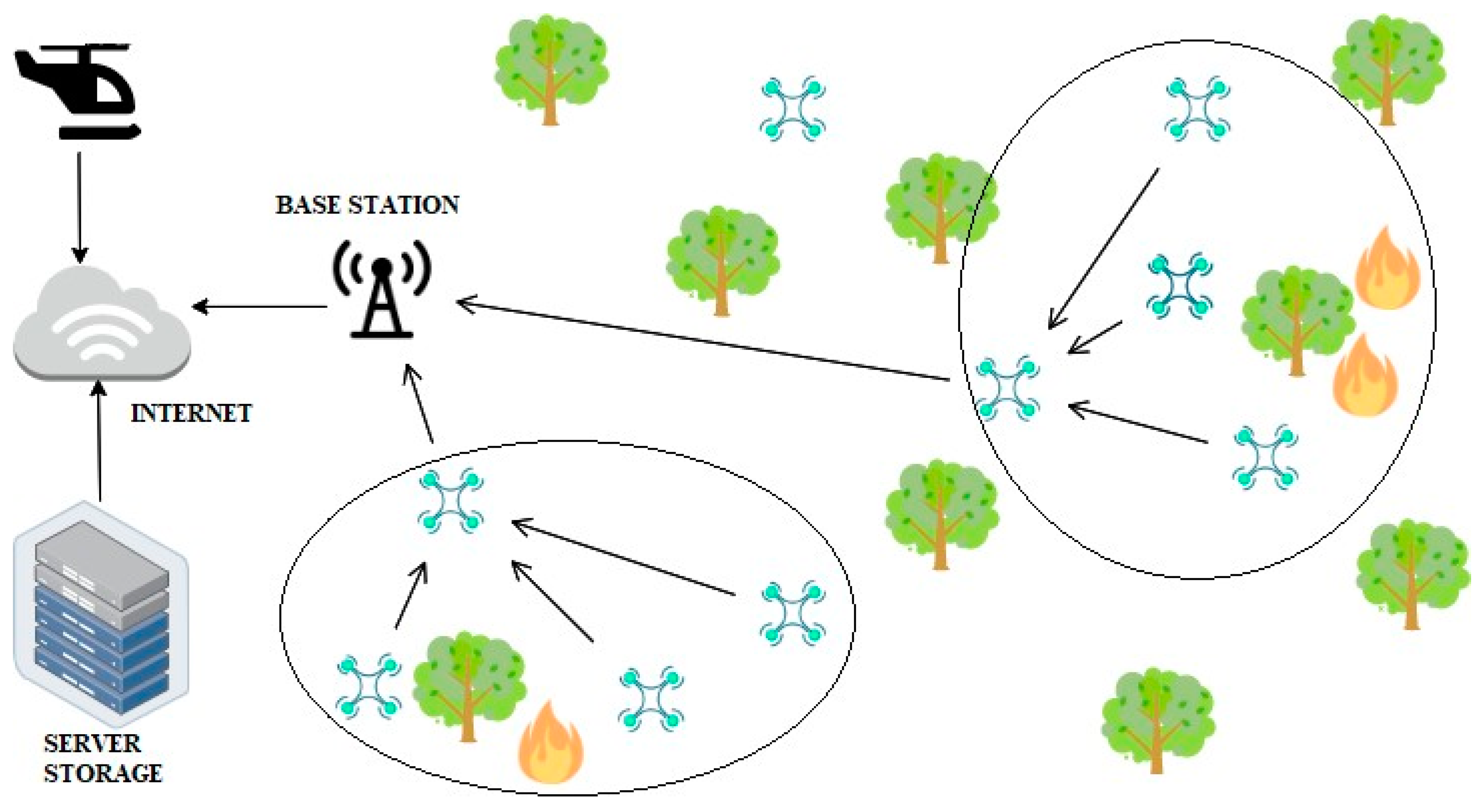

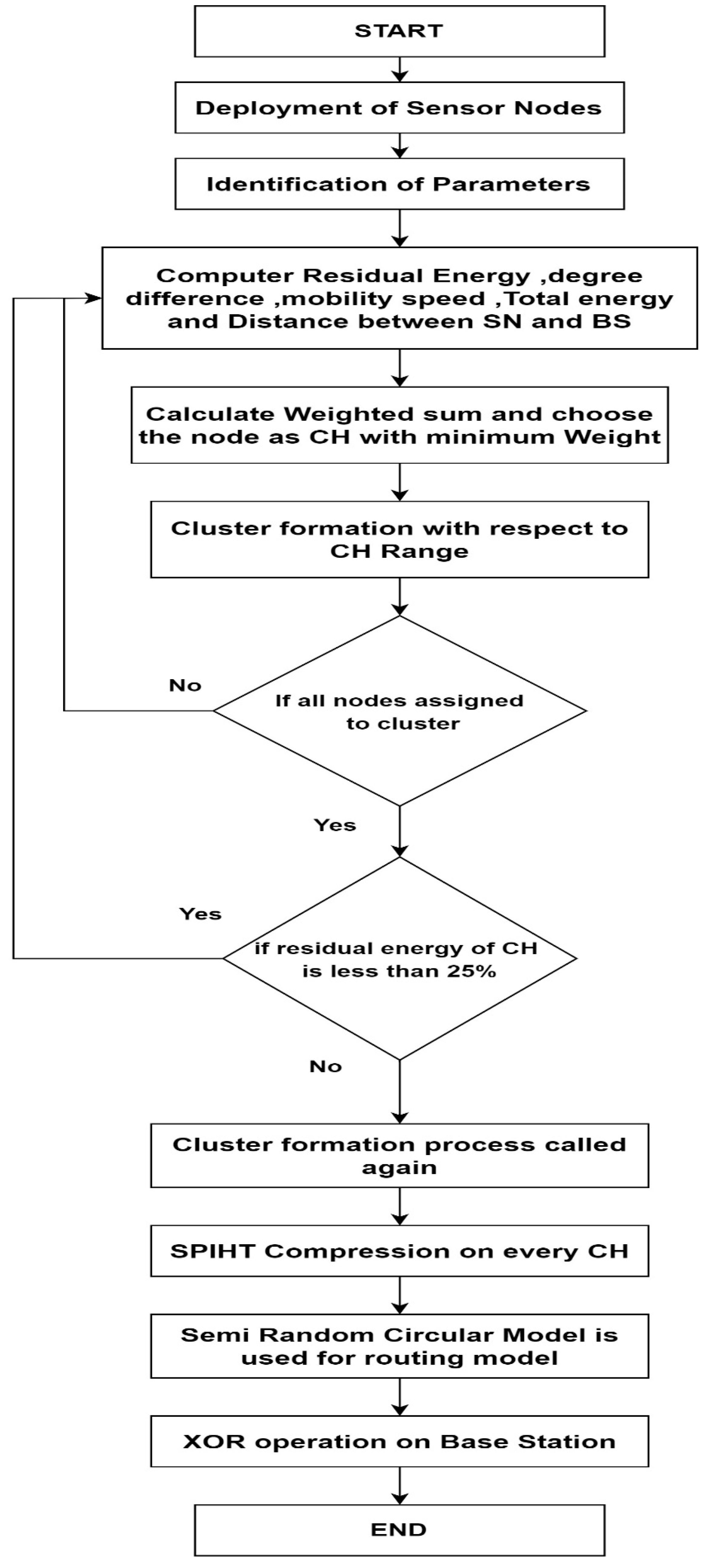
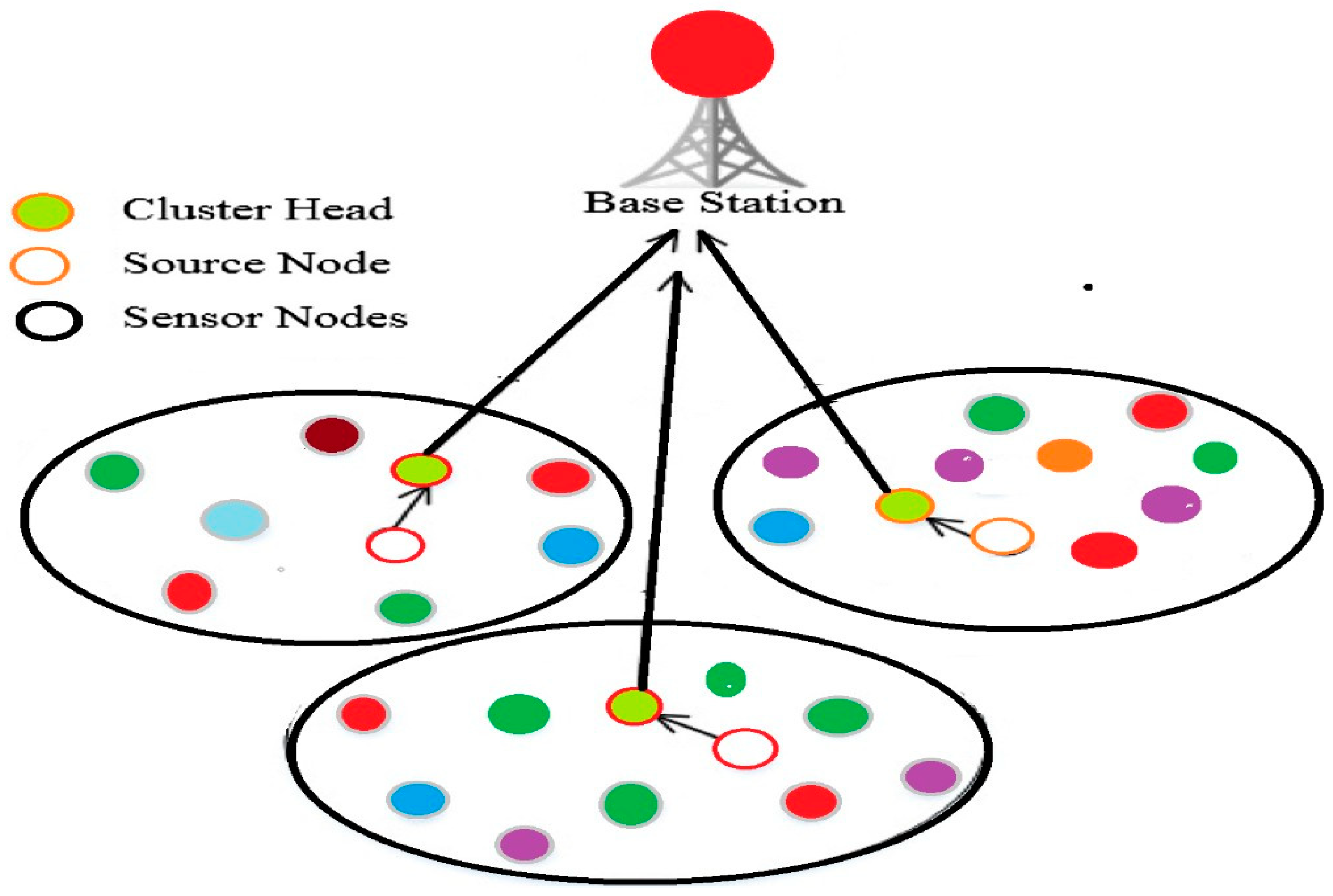
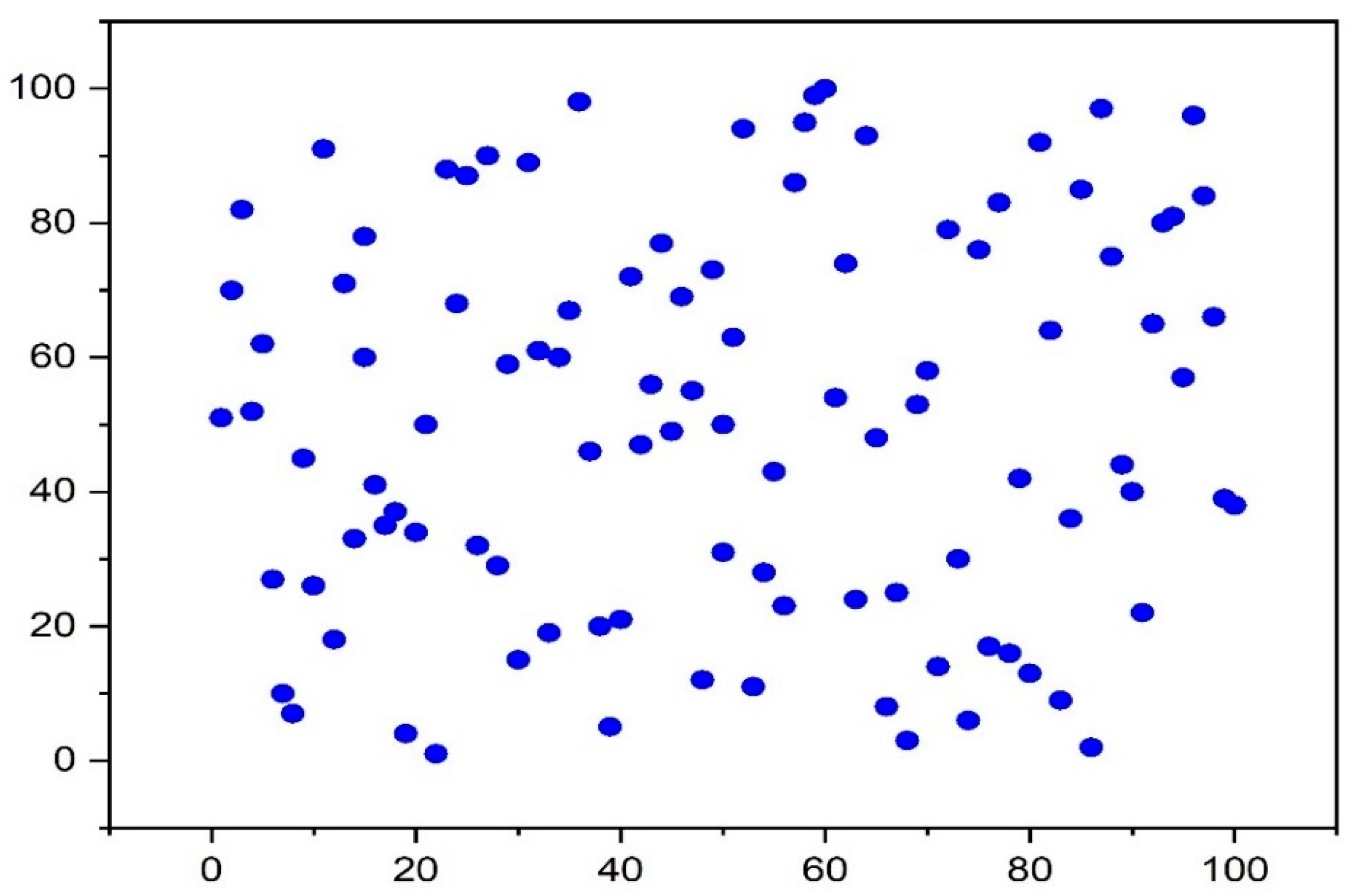

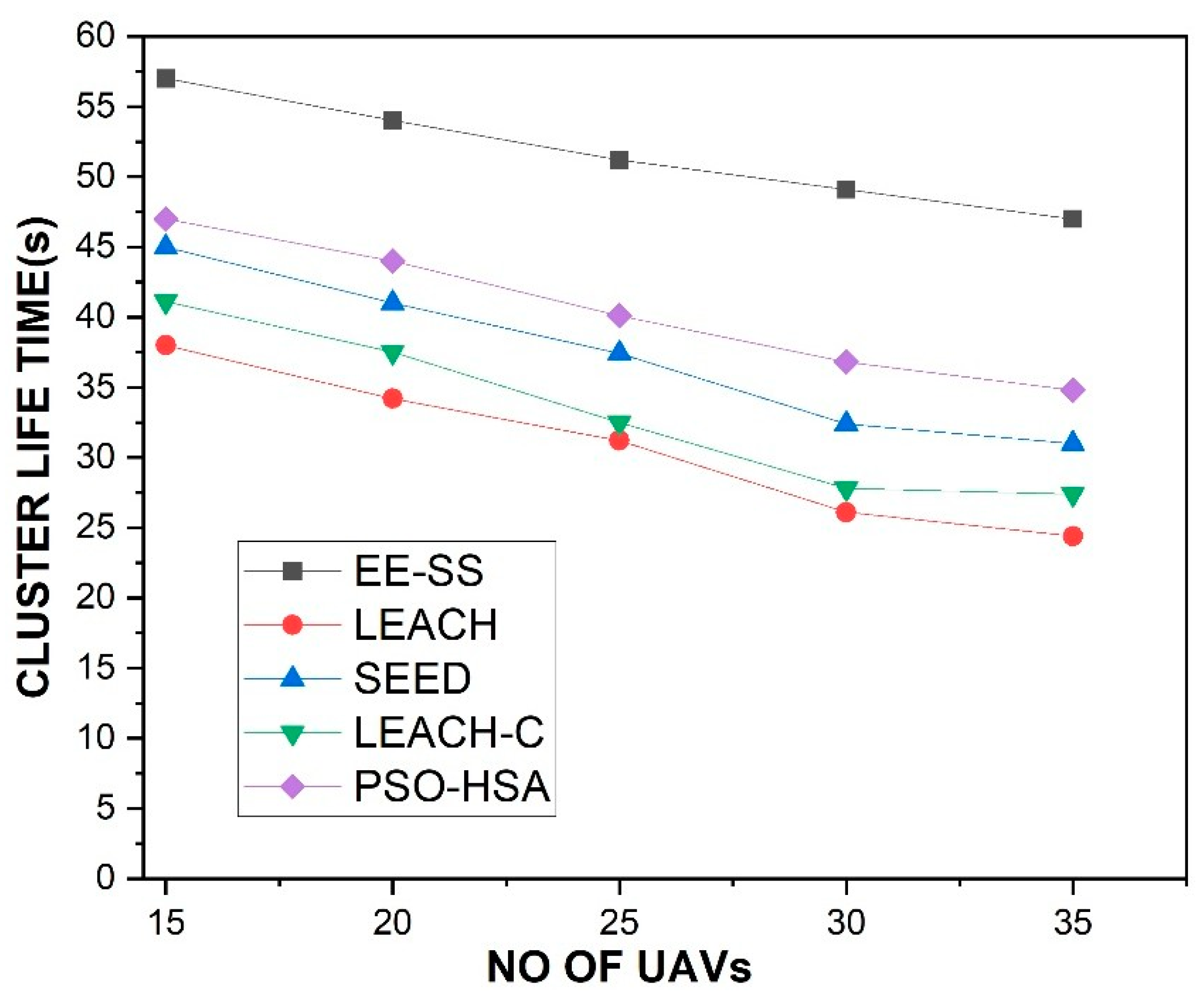
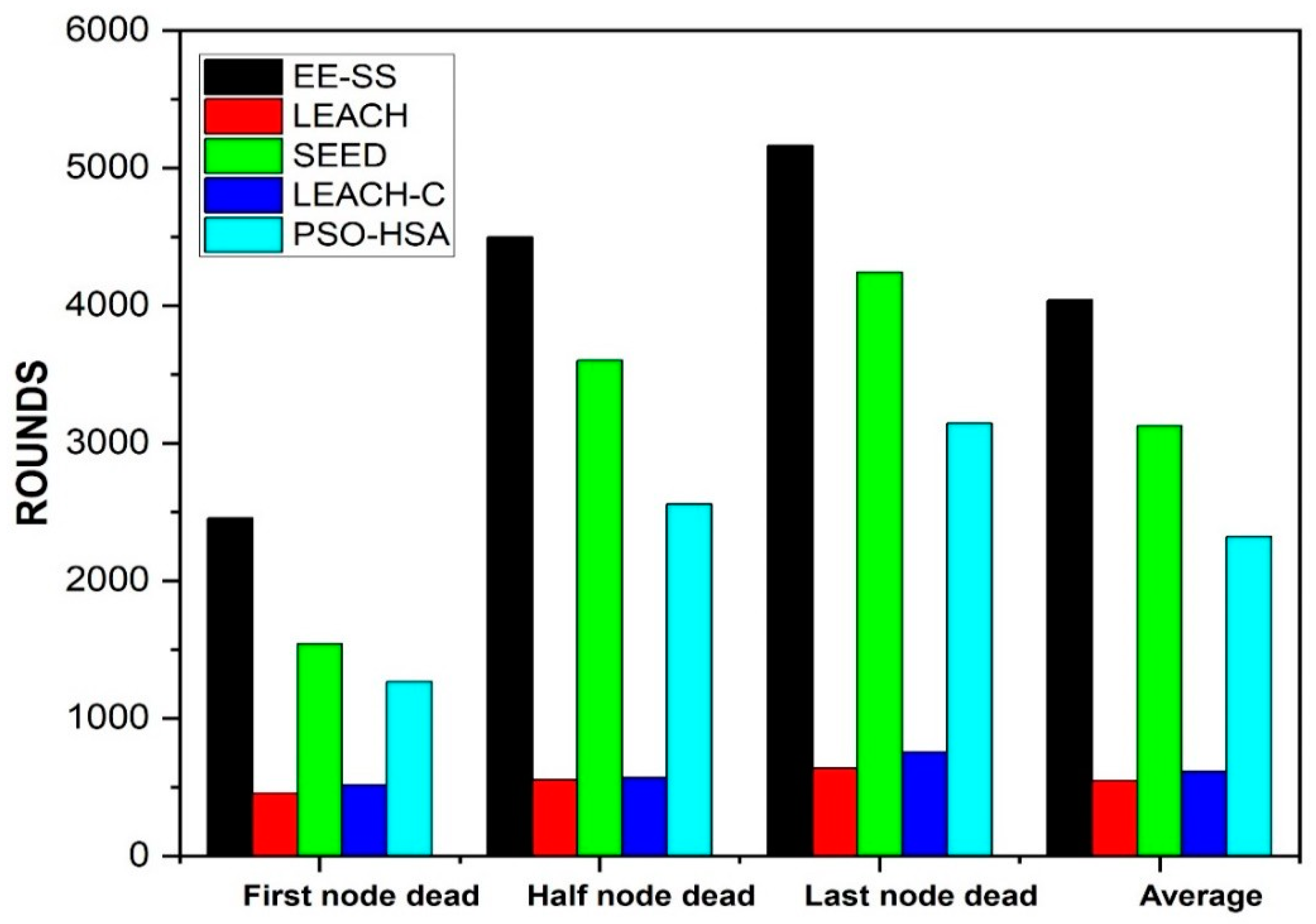
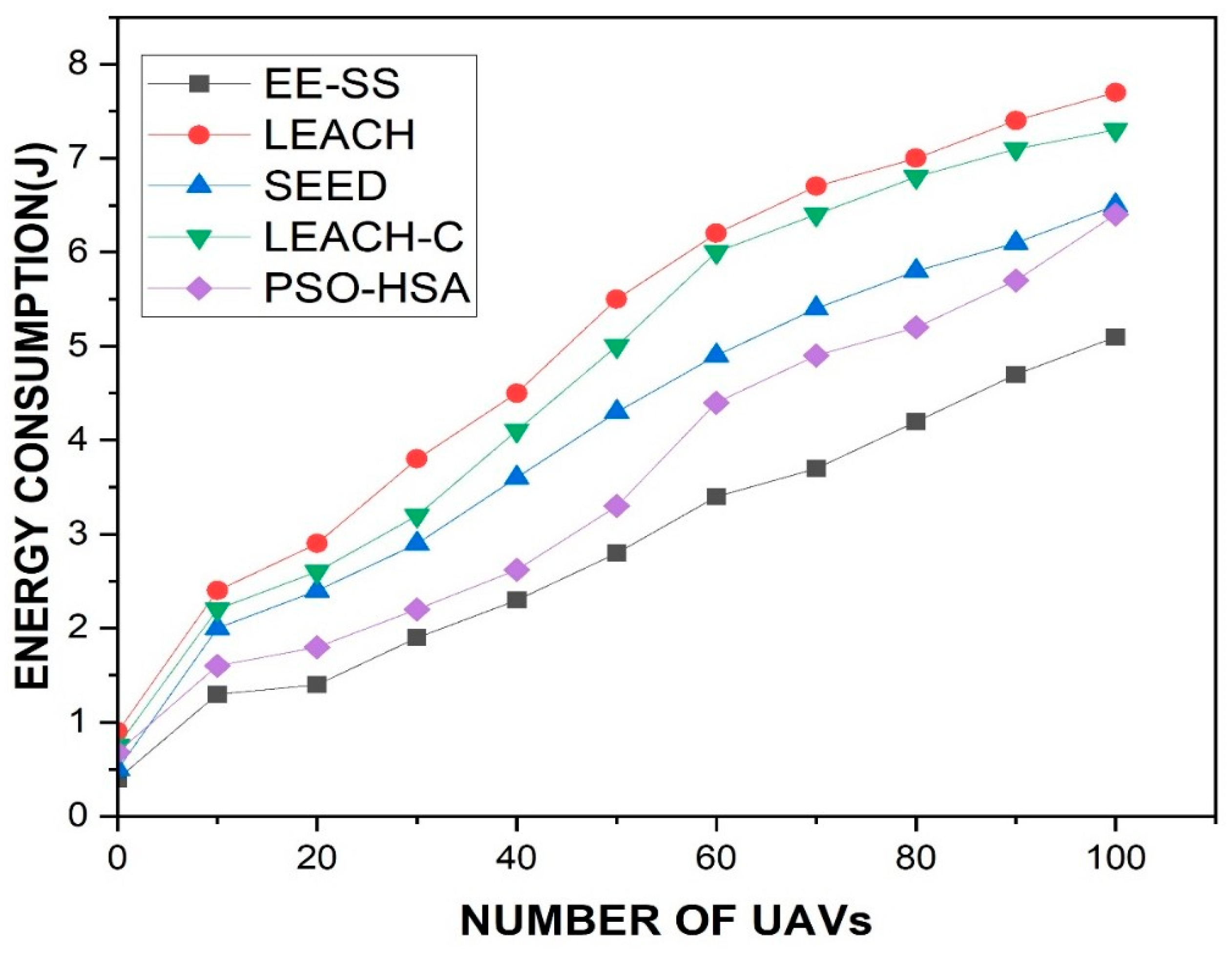
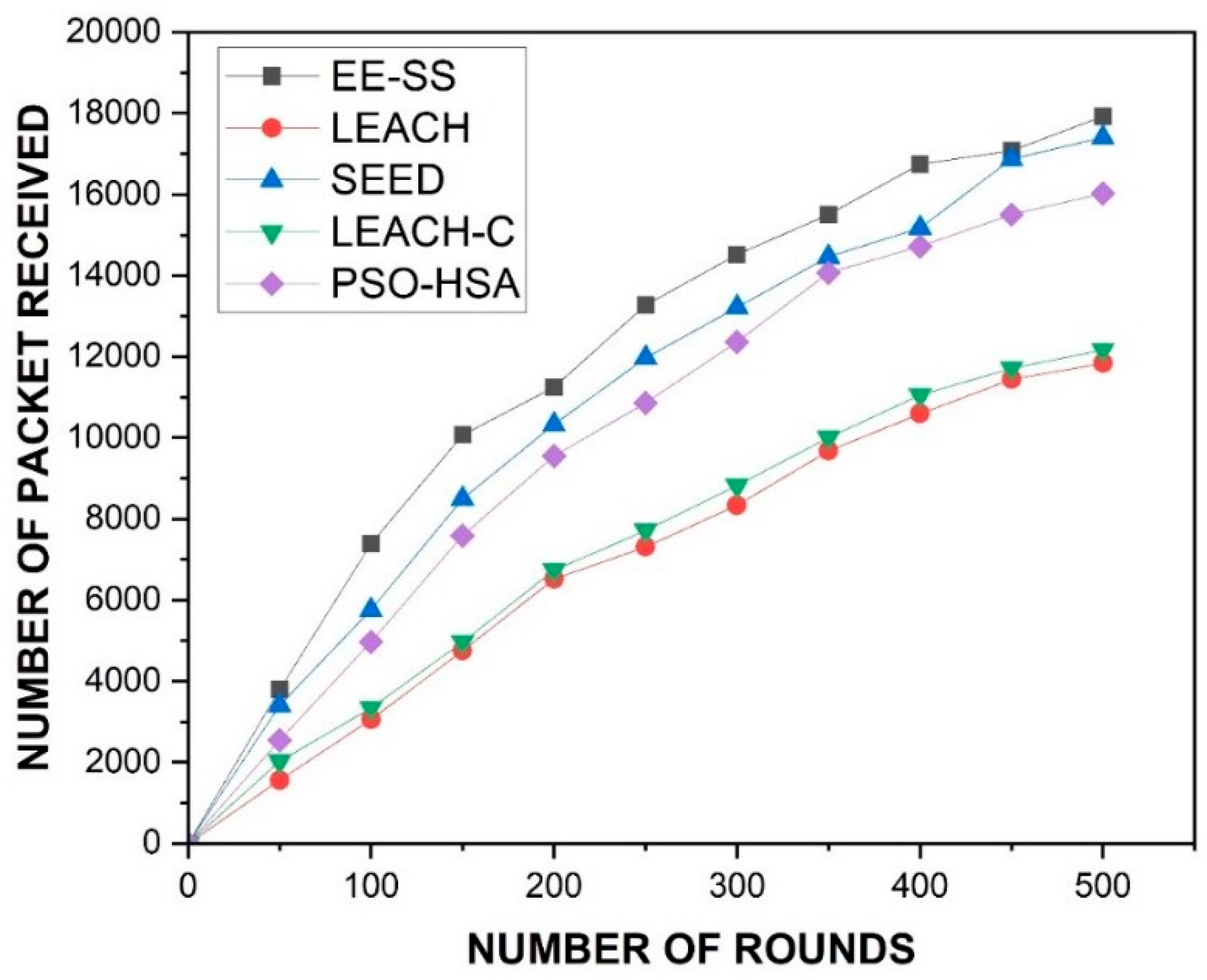
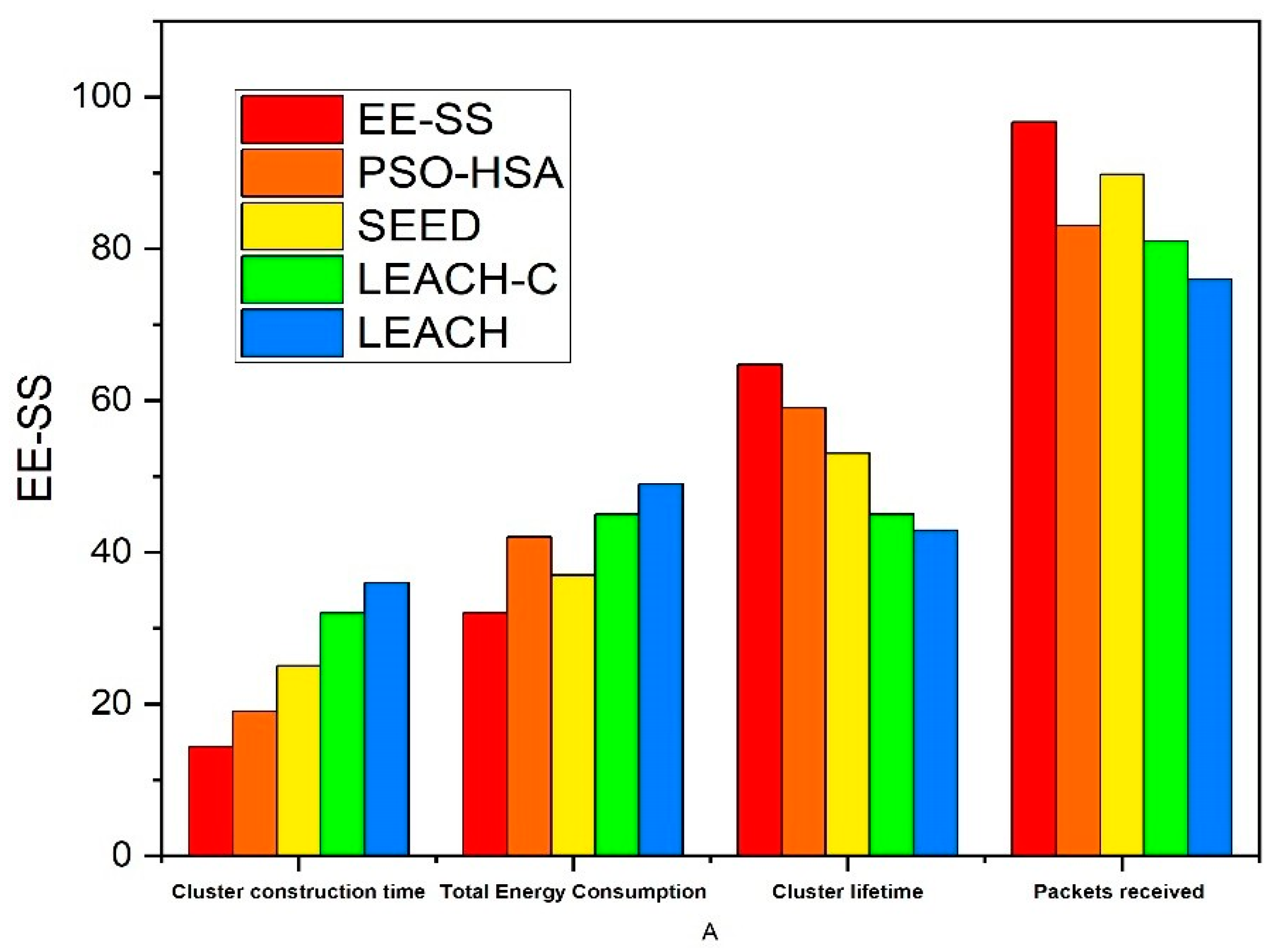
| Protocol | Clustering Type | Energy Efficiency | Clustering Stability | No of CH’s | Cluster STABILITY | Network Type | No. of Nodes in Cluster |
|---|---|---|---|---|---|---|---|
| LEACH | Random | Low | Low | Indecisive | Low | Homogenous | Changeable |
| LEACH-C | Centralized | Medium | Low | Decisive | Medium | Homogenous | Changeable |
| TEEN | Probability Centralized | Medium | Low | Indecisive | Low | Homogenous | Changeable |
| PSO-HSA | PSO And HSA Centralized | High | Low | Indecisive | High | Homogenous | Changeable |
| PSO-SD | Pso Centralized | Moderate | High | Indecisive | High | Homogenous | Changeable |
| HSA-N | HSA-Based Centralized | Medium | High | Indecisive | Low | Homogenous | Changeable |
| TPSO-CR | PSO-Based Centralized | Moderate | Low | Decisive | High | Homogenous | Changeable |
| iCSHS | Cuckoo-Based Distributed | Moderate | High | Indecisive | Low | Homogenous | Changeable |
| LEACH-B | Distributed | High | Low | Decisive | Medium | Homogenous | Changeable |
| LEACH-ME | Distributed | High | High | Indeterminate | Medium | Homogenous | Changeable |
| Protocol | Converge | Routing | Clustering Category | Mobility | Scalability | Complexity |
|---|---|---|---|---|---|---|
| LEACH | No | Single Hop | Residual Energy | Static | Limited | Low |
| LEACH-C | No | Single Hop | Centralization | Static | Good | High |
| TEEN | No | Single Hop | Centralization | Static | Very Good | High |
| PSO-HSA | Moderate Balanced | Single Hop | Centralization | Static | Very Good | High |
| PSO-SD | Moderate | Single Hop | Centralization | Static | Good | Medium |
| HSA-N | Medium | Single Hop | Centralization | Static | Good | High |
| TPSO-CR | Moderate Balanced | Single Hop | Centralization | Mobile | Good | High |
| iCSHS | Moderate Balanced | Multi-Hop | Centralization | Static | Average | High |
| LEACH-B | No | Single Hop | Residual Energy | Static | Limited | High |
| LEACH-ME | Medium | Single Hop | Mobility | Mobile | Good | High |
| Parameter | Default Value |
|---|---|
| Monitoring field | 100 × 100 |
| Count of nodes | 100 |
| Minimal distance among nodes | 2 m |
| Simulation runs | 10 |
| Simulation time | 120 s |
| Base station position | (50, 50) |
| Initial energy | 0.5 J |
| Transmission range | 40 m |
| Probability of turning a node as CH | 0.1 |
| Energy for transmitting of each bit energy consumed for receiving | 50 × 0.000000001 |
| Tx/Rx electronics constant [2] | 50 nJ/bit |
| Amplifier constant [1,2] | 10 pJ/bit/m2 |
| CH energy threshold [2] | 10–4 J |
| Size of packet [2] | 30 bytes |
| Packet rate [2] | 1 packet/s |
| Sensing range [2] | 10 m |
| Cluster radius [2] | 25 m |
| Number of Rounds | LEACH | LEACH-C | PSO-HSA | SEED | EE-SS |
|---|---|---|---|---|---|
| First node dead | 457 | 515 | 1267 | 1542 | 2456 |
| Half node dead | 549 | 567 | 2555 | 3601 | 4498 |
| Last node dead | 634 | 754 | 3145 | 4242 | 5164 |
| Average | 548 | 612 | 2322 | 3128 | 4039.3 |
Publisher’s Note: MDPI stays neutral with regard to jurisdictional claims in published maps and institutional affiliations. |
© 2022 by the authors. Licensee MDPI, Basel, Switzerland. This article is an open access article distributed under the terms and conditions of the Creative Commons Attribution (CC BY) license (https://creativecommons.org/licenses/by/4.0/).
Share and Cite
Bharany, S.; Sharma, S.; Frnda, J.; Shuaib, M.; Khalid, M.I.; Hussain, S.; Iqbal, J.; Ullah, S.S. Wildfire Monitoring Based on Energy Efficient Clustering Approach for FANETS. Drones 2022, 6, 193. https://doi.org/10.3390/drones6080193
Bharany S, Sharma S, Frnda J, Shuaib M, Khalid MI, Hussain S, Iqbal J, Ullah SS. Wildfire Monitoring Based on Energy Efficient Clustering Approach for FANETS. Drones. 2022; 6(8):193. https://doi.org/10.3390/drones6080193
Chicago/Turabian StyleBharany, Salil, Sandeep Sharma, Jaroslav Frnda, Mohammed Shuaib, Muhammad Irfan Khalid, Saddam Hussain, Jawaid Iqbal, and Syed Sajid Ullah. 2022. "Wildfire Monitoring Based on Energy Efficient Clustering Approach for FANETS" Drones 6, no. 8: 193. https://doi.org/10.3390/drones6080193
APA StyleBharany, S., Sharma, S., Frnda, J., Shuaib, M., Khalid, M. I., Hussain, S., Iqbal, J., & Ullah, S. S. (2022). Wildfire Monitoring Based on Energy Efficient Clustering Approach for FANETS. Drones, 6(8), 193. https://doi.org/10.3390/drones6080193










